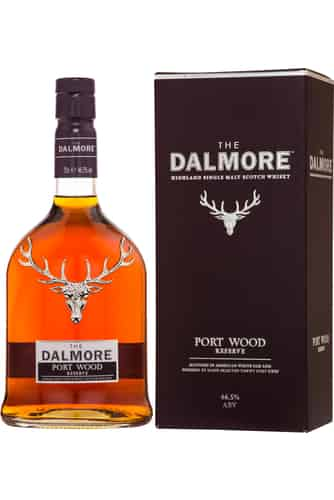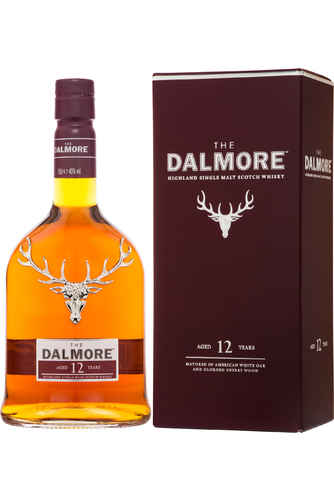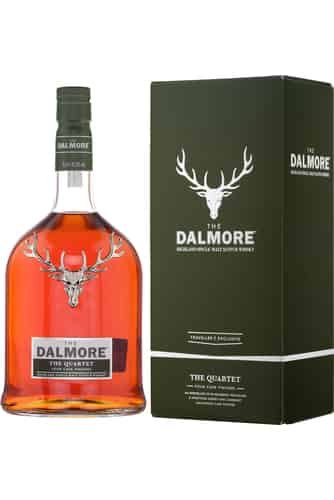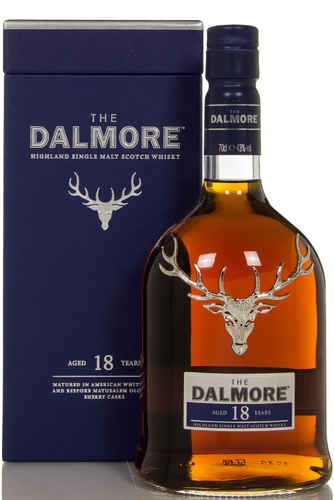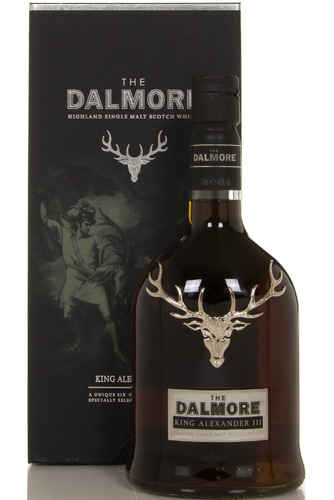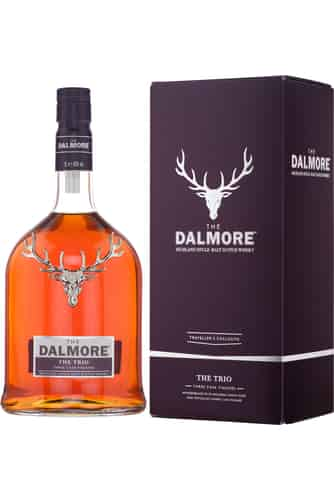 United States - DHL 15.00 € + 7.70 € /kg
United States - DHL 15.00 € + 7.70 € /kg
Dalmore

Dalmore Cigar Malt
70 cl, 44%In stock111.20 €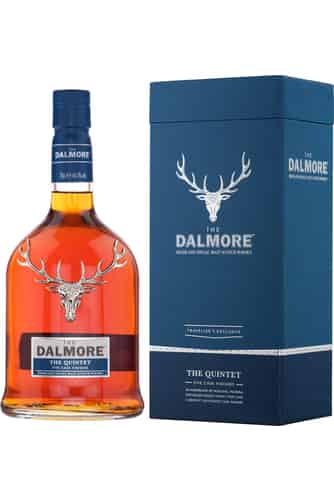
Dalmore The Quintet
70 cl, 44.5%In stock119.20 €![]()
Dalmore Port Wood Reserve
70 cl, 46.5%In stock79.20 €![]()
Dalmore 12 Year Old
70 cl, 40%Out of stock63.20 €![]()
Dalmore Quartet (1 Liter)
100 cl, 41.5%Out of stock95.20 €![]()
Dalmore 15 Year Old
70 cl, 40%Out of stock71.20 €![]()
Dalmore 18 Year Old
70 cl, 43%Out of stock119.20 €![]()
Dalmore King Alexander III
70 cl, 40%Out of stock167.20 €![]()
Dalmore Trio (1 Liter)
100 cl, 40%Out of stock87.20 €
Sorry, we didn't find anything. Please try changing your search criteria.
Dalmore History
A creator of some of the richest, most luxurious whisky in the world, Dalmore is found on the banks of Cromarty Firth, surrounded by luscious green woodland. A distillery known for its full-bodied sherried malts, Dalmore pays homage to its wildlife-teeming location with its logo: a magnificent stag.
Aside from its fabulous whisky, Dalmore is well known for its larger-than-life master blender, Richard Paterson. Known as "the nose", he is widely recognised as possessing one of the best palate’s in the industry. He is responsible for creating some of the best whisky to ever come out of the Highlands. Not only this, but he has retrospectively re-created famous lost blends and single malts, one of the best examples being Mackinlay’s Shackleton Whisky, found in the Antarctic, after 103 years encased in ice.
Dalmore ensured its position as one of Scotland’s most sought after malt whiskies with a series of high profile auction sales for their long aged stock. One record setting example occurred at McTear’s Auction House in 2002, when a price of nearly £26,000 was reached for a Dalmore single malt bottle that was 62 years old. At the time this set the record for the most paid for a bottle of whisky, only to be beaten in 2009 by a bottle of Dalmore Oculus, a vatting of Dalmore single malts which included whiskies from 1878, 1922, 1926, 1939, and 1951. This sold for £27,600. It therefore goes without saying, that old Dalmore is some of the rarest, best respected and collectible whisky on the market.
Drinkers of Dalmore should expect notes of toffee, raisins, rich fortified wine, creamy nuts and a slight meatiness. It is perhaps the archetypal after dinner malt, and a perfect digestif.
Timeline
-
1839
The distillery is founded by Alexander Matheson, who never actually distilled any whisky there, as he immediately leased Dalmore to the Sunderland family.
-
1867
The Sunderlands continue to run operations until this year, when the Mackenzies brothers – Charles, Andrew and Alexander, take over the distillery. The Mackenzie clan had a long connection to the land, having first been gifted it in 1263 by Alexander III of Scotland, after the chieftain saved his life from a charging stag. What’s more, the King allowed them to use the motto Luceo Non Uro’, which means ‘I Shine, Not Burn’ and the entitlement to use the 12-pointed Royal Stag as their crest. This same stag features on Dalmore bottles to this day.
-
1870
Dalmore becomes the first malt whisky to be exported to Australia in this year, and indeed, one of the very first to be exported anywhere outside of the United Kingdom.
-
1874
The Mackenzies decide to expand the distillery, doubling the number of stills from two to four.
-
1886
Founder Alexander Matheson dies, and Sir Kenneth Matheson, a relative, takes over.
-
1891
Sir Kenneth Matheson sells the distillery to the Mackenzie brothers for £14,500.
-
1917
The Royal Navy commandeer the distillery (as they would do with many whisky factories around Scotland) for use during World War One, changing the production from malt whisky to mines.
-
1920
The Royal Navy move out, though not before accidentally blowing up a large part of the distillery, and even more burns down due to the resulting fire. Production did resume however.
-
1922
Andrew Mackenzie, understandably enraged, took the Navy to court seeking compensation. The row would be long running, and eventually was heard before the House of Lords, then the highest court in the land.
-
1956
Dalmore ends the practice of floor malting, replacing them with a curious device known as a Saladin box. This is a type of automatic malting machine, invented by a French Colonel named Charles Saladin, in which a mechanical air flow and series of large screws ensure a successful malting of barley.
-
1960
The owners of Dalmore, the Mackenzie Brothers, merge with whisky giants Whyte & Mackay, and form the Dalmore-Whyte & Mackay Ltd. company.
-
1966
The stills double again, this time from four to eight, increasing capacity greatly.
-
1970
Richard Paterson joins the distillery.
-
1971
Whyte & Mackay is purchased by Sir Hugh Fraser’s SUITS Group.
-
1973
Tomintoul and Fettercairn distilleries are purchased by the SUITS Group.
-
1975
Richard Paterson becomes Master Blender.
-
1981
The SUITS Group is acquired by Lonrho.
-
1982
Use of the Saladin Box ends, and the distillery begins to buy in its malt from a central malting, as is the industry standard.
-
1988
Whyte & Mackay is sold to Brent Walker.
-
1990
Whyte & Mackay is purchased by American Brands, now known as Fortune Brands.
-
1993
The company purchases Jura and Tamnavulin, after buying out Invergordon Distillers.
-
1995
American Brands is renamed JBB in Europe.
-
2001
JBB managers stage a buyout of the company and rename it Kyndal Spirits.
-
2002
The record for the most expensive bottle of Scotch is smashed by a 62 year old bottle of Dalmore sold at McTear’s Auction House.
Meanwhile, Kyndal spirits changes its name back to good old Whyte & Mackay.
-
2004
A distillery visitor centre is opened.
-
2005
A private collector purchases another bottle of Dalmore 62 year old for £37,000.
-
2007
Whyte & Mackay is purchased by Vijay Mallya’s United Brands, an Indian company.
-
2010
New owners seek to increase the brands profile and greatly expand the standard range of bottles offered.
-
2011
The visitor centre is replaced after just a few years, to the tune of £1 million.
-
2012
This year sees the release of one of the most collectible group of whisky bottles ever, Dalmore’s Constellation Collection, which included vintages from 1964 to 1992, with the most expensive bottles reaching £25,000, or about £150,000 for the entire collection. Again Dalmore proved itself to be one of the world’s most sort after malt whiskies.

